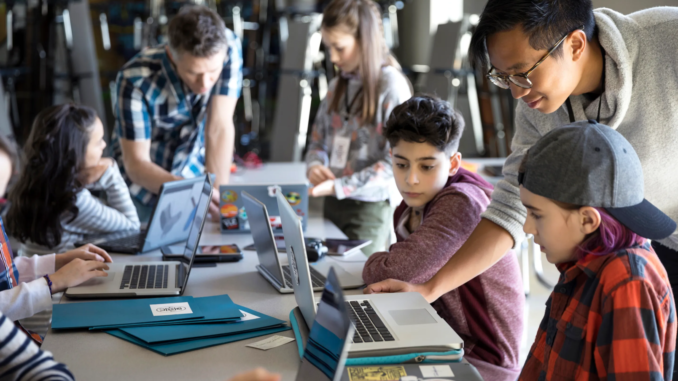
The Future of Learning: How Technology is Transforming Education
In today’s rapidly evolving world, technology is not just a part of our daily lives—it’s revolutionizing how we learn. From classrooms to living rooms, the educational landscape is undergoing a dramatic transformation, driven by innovations that are making learning more accessible, engaging, and personalized. As we look to the future, it’s clear that technology will continue to play a central role in shaping education for generations to come.
A Shift from Traditional to Tech-Enhanced Learning
For decades, the traditional classroom has been centered around textbooks, chalkboards, and face-to-face instruction. While these methods still hold value, technology has expanded the boundaries of where and how learning can take place. Digital tools such as laptops, tablets, interactive whiteboards, and online platforms are now common in many schools, enhancing both teaching and student participation.
Platforms like Google Classroom, Microsoft Teams for Education, and Zoom have allowed students to access resources, collaborate with peers, and interact with teachers from virtually anywhere. This flexibility was especially vital during the COVID-19 pandemic, which forced schools to rapidly shift to remote learning and highlighted the power—and necessity—of educational technology.
Personalized Learning Experiences
One of the most significant ways technology is transforming education is through personalized learning. With the help of artificial intelligence (AI) and data analytics, educators can now tailor instruction to meet the individual needs of each student.
For example, adaptive learning platforms such as Khan Academy and DreamBox Learning analyze students’ progress and adjust the difficulty of lessons accordingly. This ensures that learners receive the right level of challenge—neither too easy nor too overwhelming—helping them stay motivated and make steady progress.
This personalization doesn’t stop at academic content. Technology also allows students to learn at their own pace, choose learning paths that suit their interests, and access materials in formats that match their learning styles, whether visual, auditory, or kinesthetic.
Gamification and Interactive Learning
Learning no longer has to be dull or one-size-fits-all. Technology has introduced gamification into education—using game elements like points, levels, and rewards to make learning fun and engaging. Apps such as Kahoot!, Quizizz, and Duolingo turn lessons into interactive games that boost student involvement and retention.
Virtual and augmented reality (VR and AR) are also gaining traction, offering immersive learning experiences that go beyond the pages of a textbook. Imagine walking through ancient Rome in a history lesson or conducting a virtual chemistry experiment without any real-world risk—these are now possible thanks to technology.
Bridging Gaps and Expanding Access
One of the most powerful impacts of educational technology is its ability to break down barriers. Online learning platforms and open educational resources (OER) have made quality education more accessible to people around the world, regardless of location or economic background.
Students in rural or underserved areas can now access the same content and instruction as those in major cities. Adults can upskill or earn degrees online while managing full-time jobs and family responsibilities. For learners with disabilities, assistive technologies like screen readers, speech-to-text tools, and customizable interfaces ensure that education is more inclusive than ever.
Preparing for the Future Workforce
As technology continues to shape the job market, education must evolve to prepare students for the future. Coding, data analysis, digital literacy, and critical thinking are becoming essential skills. Many schools are integrating STEM (Science, Technology, Engineering, and Mathematics) programs and tech-focused curricula to help students stay competitive.
Moreover, virtual internships, online certifications, and e-learning platforms like Coursera, edX, and Udemy are enabling learners to acquire job-ready skills without traditional classroom settings.
Final Thoughts
Technology is not just transforming how we learn—it’s expanding what we can learn, when, where, and how. As we move further into the digital age, the fusion of education and technology will continue to open doors to personalized, accessible, and impactful learning experiences. The future of learning is here—and it’s powered by innovation.
